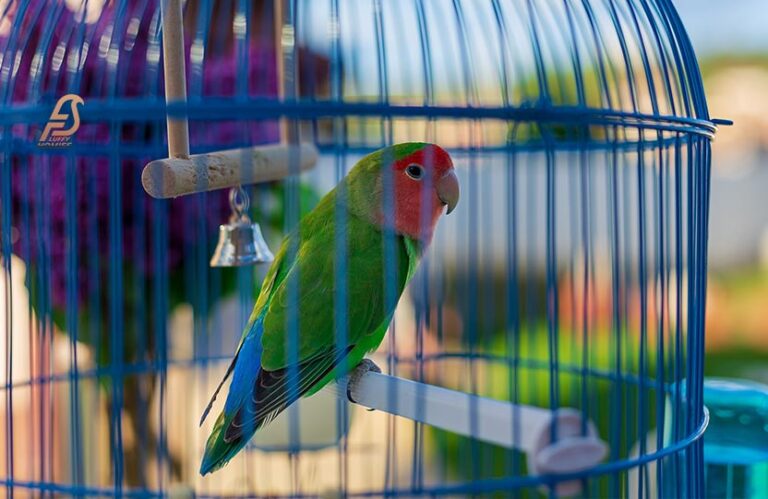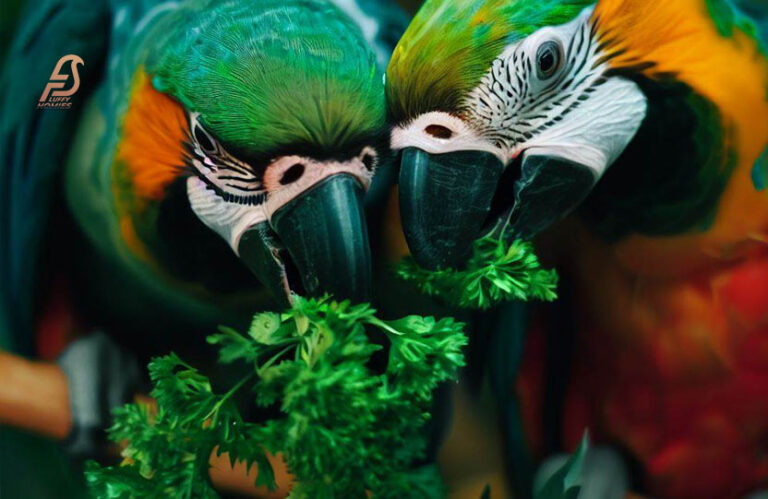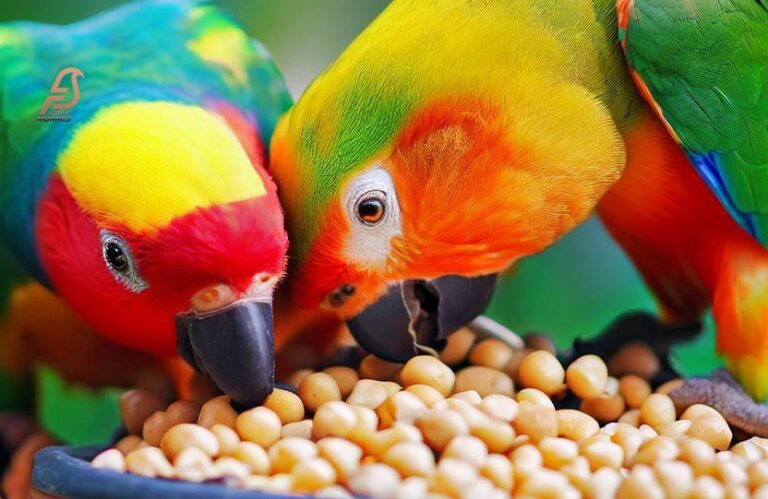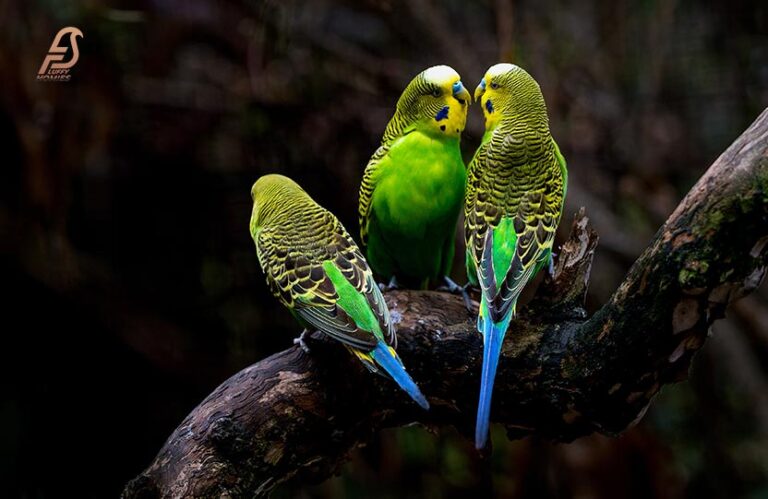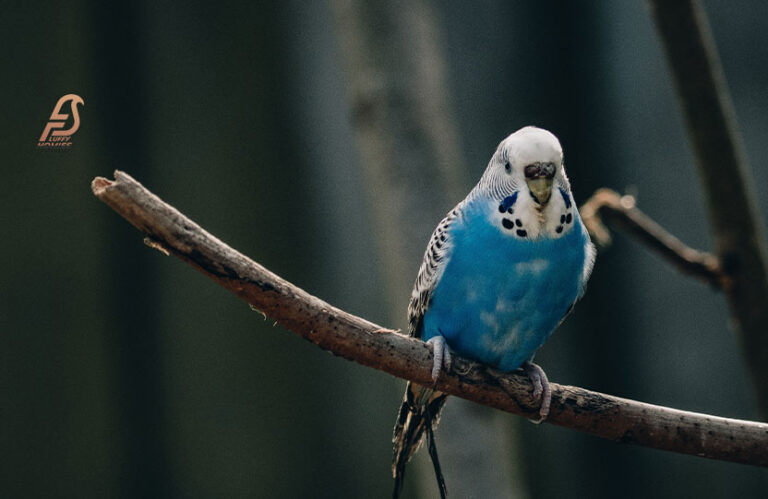Parrotlets vs Lovebirds (Who Comes Out on Top in 2023)
Different types of parrots have different natures and appearances. Each category has its unique benefits.
In the case of Parrotlets vs lovebirds, both are popular pet birds, known for their lively personalities and affectionate natures.
Both species make great companions for bird owners, but they do have some differences that are important to consider when choosing a pet bird.
What Are the Parrotlets?
Parrotlets are small, brightly colored parrots native to South America.
They are part of the family Psittacidae and are known for their intelligence, playful behavior, and affectionate natures.
They are often kept as pets due to their small size and their ability to form strong bonds with their owners.
Parrotlets are also popular for their ability to learn tricks and mimic sounds, which can make them entertaining and interactive pets.
What Are the Lovebirds?
African lovebirds are little parrots.
They are members of the Psittacidae family and are renowned for their close relationships with their owners, kind dispositions, and amusing personalities.
Due to their sociable nature and the fact that they develop close, lifelong ties with their owners, they are frequently kept as pets.
Lovebirds make excellent companion birds due to their playful nature, willingness to bond with their humans, and other characteristics.
Lovebirds love to eat different types of food like they can eat strawberries and more.
Parrotlets vs Lovebirds: What Are the Differences?
Color
Parrotlets come in a variety of colors, including green, blue, and yellow, while Lovebirds come in a variety of colors including green, yellow, and blue.
Some Lovebirds also have markings on their faces and heads, while Parrotlets have more uniform coloring.
Gender Appearance
In both species, the male and female birds look similar and it can be difficult to tell them apart.
However, in some species of Lovebirds, the males may have a brighter or more distinct head marking than the females.
Size
Parrotlets are smaller than Lovebirds and typically measure about 4-5 inches in length, while Lovebirds measure around 6 inches in length.
This makes Parrotlets more suitable for smaller living spaces or for owners who want a smaller bird.
Speaking Abilities
Parrotlets are known for their intelligence and ability to mimic sounds, while Lovebirds are less likely to develop speaking abilities.
Parrotlets can learn to mimic words and sounds, but this requires consistent training and patience.
Lovebirds are still known to be playful and interactive, but they are less likely to develop speaking skills.
Nesting Behavior
Lovebirds are known for their love of nesting and they enjoy creating nests, while Parrotlets are less interested in nesting behavior.
Lovebirds may build nests with materials provided by their owners, and they may also lay eggs in the nest.
Parrotlets, on the other hand, do not have a strong urge to nest and may not build a nest or lay eggs.

Bathing
Lovebirds may enjoy bathing, while Parrotlets prefer to clean themselves by preening. Lovebirds may benefit from a daily misting of water to help them maintain healthy skin and feathers.
Housing
Both species require a cage that is large enough for them to move around in and that provides plenty of toys and interactive items for them to play with.
Lovebirds may require a larger cage due to their larger size, while Parrotlets are more suited to smaller cages.
Parrotlets vs Lovebirds: What Are the Similarities?
Parrotlets and lovebirds have several similarities in terms of diet, lifespan, activity level, and intelligence:
Lifespan
Both parrotlets and lovebirds have a relatively long lifespan, typically up to 15 years or more with proper care.
Diet
Both species have a primarily seed-based diet, but should also be offered fruits, vegetables, and fortified pellets to ensure they receive a balanced and nutritious diet.
Activity Level
Both species are highly active and playful and need plenty of opportunities for physical activity, such as climbing, flying, and playing with toys.
Intelligence
Both parrotlets and lovebirds are highly intelligent and capable of learning to perform tricks, mimic sounds, and solve problems.
They need mental stimulation to prevent boredom, and owners should provide plenty of toys and puzzles to keep them entertained.
Related Articles
- Why Birds Scared of Humans?
- Do Air Fryers Kill Birds?
- When Do Pigeons Molt?
- Why Carolina Wrens Sleep in Corner?
Can You Keep Lovebirds and Parrotlets Together?
Lovebirds and parrotlets can live together, but it is important to carefully consider a few factors before making a decision:
Species Compatibility
It is important to research the species-specific behaviors and temperaments of both lovebirds and parrotlets to determine if they are likely to be compatible.
Size Difference
Lovebirds are larger than parrotlets and can sometimes be aggressive towards smaller birds.
It is important to provide adequate space and resources to prevent competition and reduce the risk of aggression.
Social Dynamics
It is important to monitor social dynamics between birds to ensure that everyone is getting along and that no one is being bullied or excluded.
Medical Concerns
Some species of birds can carry diseases that are transmissible to other birds, so it is important to take necessary precautions to prevent the spread of disease, such as quarantining new birds and regularly disinfecting cage surfaces.
Parrotlets vs Lovebirds: Which One is Best?
The best bird species for you will depend on your lifestyle, preferences, and resources.
Both parrotlets and lovebirds have unique characteristics and both can make excellent pets. Some factors to consider when choosing between the two species include:
Space
Parrotlets are smaller than lovebirds and can be housed in smaller cages, making them a good option for those with limited space.
Lovebirds, on the other hand, need larger cages to accommodate their larger size and active personalities.
Noise Level
Lovebirds can be quite vocal and are known for their shrill calls, while parrotlets are generally quieter. Consider your tolerance for noise when choosing a species.
Activity Level
Both parrotlets and lovebirds are highly active and playful, but lovebirds tend to be more energetic and need more space for physical activity.
Social Nature
Both species are social and enjoy the company of their kind, but lovebirds are more likely to bond with a mate and may become less social with their owner if they are paired with another bird.
Care Requirements
Both species require a balanced diet, adequate space, and mental stimulation.
But lovebirds may need more resources, such as a larger cage and more toys, to accommodate their larger size and active personalities.
Conclusion
Parrotlets and lovebirds are both popular pet bird species with many similarities, such as their social nature, intelligence, long lifespan, and playful personalities.
However, they also have differences, such as their size, noise level, and activity level.
When deciding between the two, it’s important to consider your lifestyle, preferences, and resources, such as the amount of space you have available and your tolerance for noise.
Both species have unique qualities and can make great pets for the right person, but lovebirds may be best for those with larger living spaces and a higher tolerance for noise, while parrotlets may be a better choice for those with limited space or a quieter household.
Frequently Asked Questions
Is a parrotlet the same as a lovebird?
No, a parrotlet and a lovebird are different species of pet birds. Both have similarities, but also distinct differences in size, noise level, and activity level.
What is the difference between a celestial parrotlet and a lovebird?
Celestial parrotlet and lovebird are two different species of pet birds. Celestial parrotlet is smaller and quieter, while the lovebird is larger and more active. Both require proper care and social interaction.
Is a parrotlet a good first bird?
Parrotlets can make good first birds for responsible and dedicated owners who are prepared to provide proper care, social interaction, and mental stimulation. They are small, intelligent, and long-lived, but also require proper diet and housing.
What is the friendliest bird type?
The friendliest bird type is subjective and depends on the individual bird personality and the owner’s interaction and training. Some friendly bird species include Budgies, Cockatiels, African Grey Parrots, and Amazon Parrots.
Can a parrotlet bird Talk?
Yes, some parrotlet birds can learn to talk with proper training and social interaction. They have a good memory and can mimic human speech, but their talking ability varies by individual.

